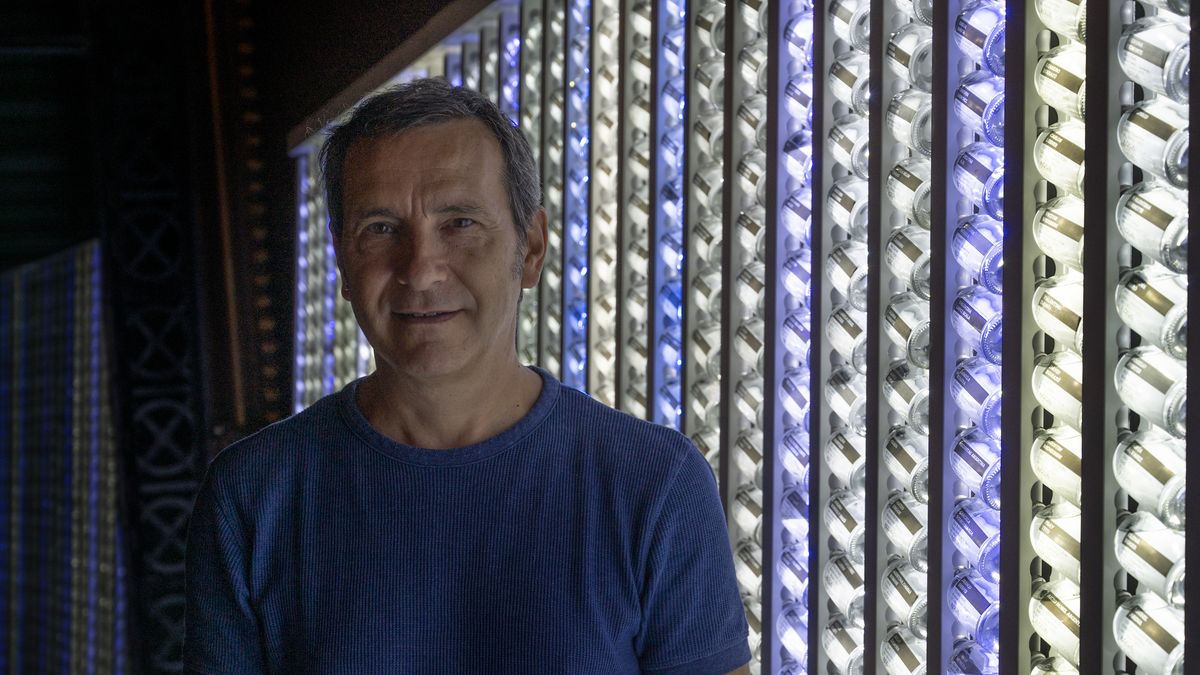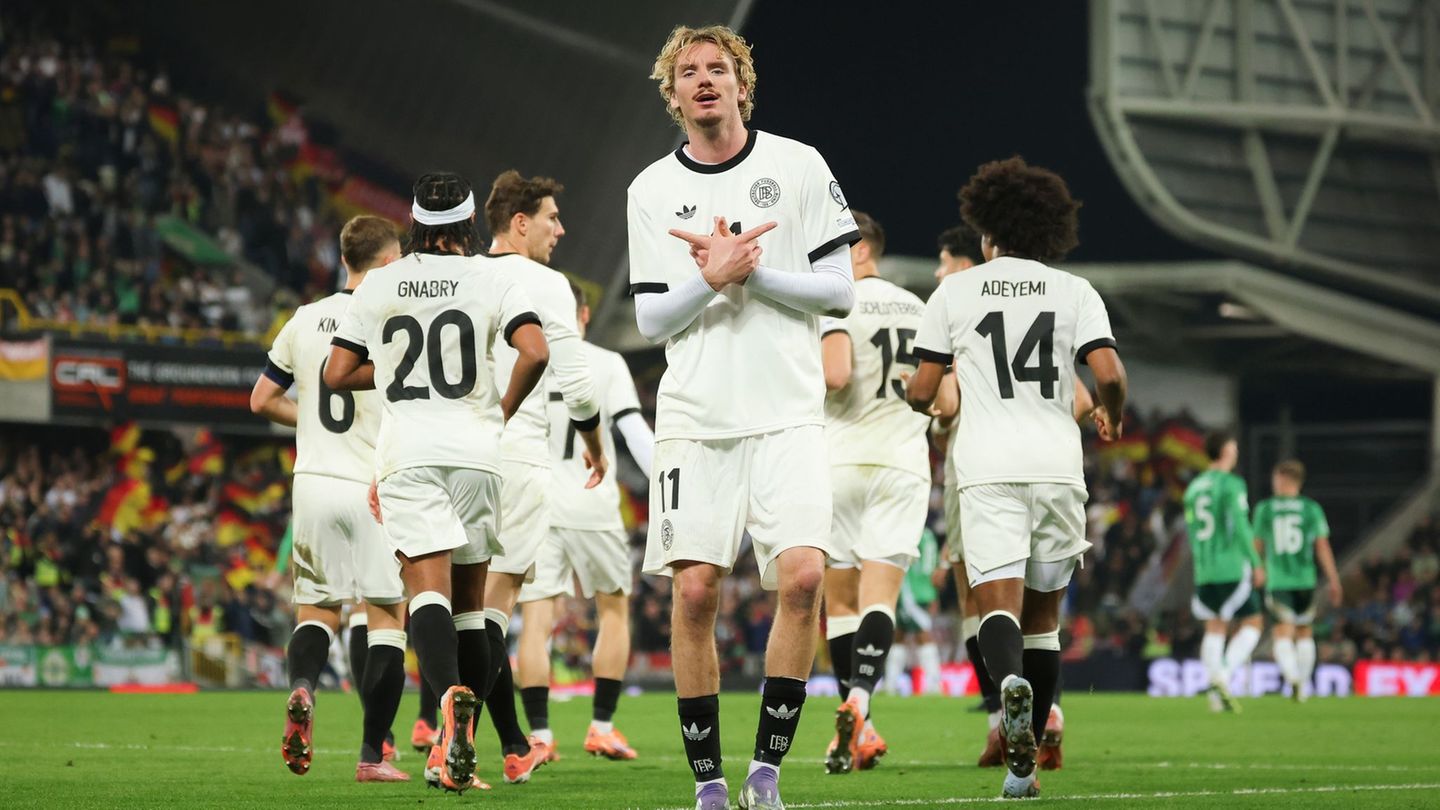Carlos Montani: No. This is a traveling work. Last year it was exhibited at the House of Culture, on Avenida de Mayo, and in the coming days we will be able to inform you where it can be visited this year. On March 22, which is International Water Day, it turns 12 years old. Since its creation, it was in Paraguay, Brazil, the United States, Geneva, and the Vatican.
Q: How did the germ of the idea come about?
CM: Very diverse. It was a sum of things that, at a given moment, find a catalyst that unites and concretizes them. My first experience with water was when I was five years old, in the Chaco. My father had a field there, he had built a couple of mills, he had put in a kind of Australian tank for the cows, and then, when the water started coming out of one of the mills, the look on the face of the manager’s son, who She was the same age as me, I still remember her. He had never seen that amount of crystal clear water gushing out of a pipe.
Q: The initial astonishment as a starting point.
C.M..: Exact. Many years later, as a mechanical engineer, I worked in a company that was very environmentally conscious. When I left there I felt that, by continuing to work with water, I was missing the social leg, of responsibility, and that was when I decided to use art, which I had already been practicing, as a tool to communicate the social. So the combination of art and environmentalism was the best way to enhance the effort.
Q: What was your first work as an artist?
CM: “Water buoy”, which is a floor where you walk and the water consumption that each product has appears, and then it disappears because it is a gel-like floor. From that moment on he had planned to make a collection of the waters of the world, which would have identified the place, the date and even the person who donated it for that collection. All of this together summarizes a story, made up of many stories. I wanted to organize that and that’s when a person from the company where I worked contacted me, who had a project called Hydros, and needed ambassadors throughout Latin America. This is how the two things came together: their project and mine, because each ambassador would have his own bottle of water, to which others and others would join.
Q: The first bottles.
CM: Yes, it was March 22, 2012, and we started with 300 bottles.
Q.: And now it has come to 1912.
CM: From 72 countries, from all continents. We started with organizations, then with events, and with more exclusive bottles in some cases.
Q.: Delivered by celebrities, because I saw that among the donors are Marta Minujín, Julio Bocca, Joan Manuel Serrat, Patricia Sosa, Elena Roger, Mirtha Legrand, Facundo Arana, Carola Reyna, Boy Olmi, Nicolás Pauls and even Pope Francis.
CM: Well, yes, but curiously that is what attracts the visitor’s attention the least. And I learned that a lot from schools. What interested them most was the origin of the water and not who gave it away. On the labels on each bottle the biggest name is the person who delivered it, but everyone paid attention to where it came from. That led me to another step that the work had, and that is the map with all the geolocated bottles.
Q: And each one has its story.
CM: Yes, some I know, others I don’t. That of Pope Francis represented quite a move, because first we installed the work in the Vatican, then we extracted the water from the fountain that is in front of Santa Marta, which is his place of residence, then we gave him the little bottle and he gave it to us turn. But it is not the only case that is so personalized, there are hundreds of stories, that is why the work is almost like a literary structure through water.
Q: What dimensions does it have and how is it displayed?
CM: It is already two meters high and almost seven meters wide, and it continues to grow. I like to backlight it, put it in dark places so that it is the same light, through the water, that attracts.
Q: Is there a different color or do all the waters have the same tone?
CM: There are some that are somewhat different, but they are all drinkable waters. And this is interesting: a person gave me water from a stream in Colombia, and the bottle was brown. At first, I rejected it, but at night he decanted all the earth and in the morning it was limpid, with the earth at the bottom. He explained to me that it is the water that the residents of that region drink because they do not have any system to filter it. And they are healthy. In the installation, I gave it special lighting to show the movement of the substances.
Q: Last week, with the rains that occurred, water became an enemy in many areas of the country.
CM: Water can be, of course. In Cedar Rapids, Ohio, United States, where the river flood once swept away half of the historic center, a commemorative event is held every year. In 2013, a year after the creation of the work, I sent a scale reproduction to add to that memory. It was Aqua Planetae’s first international participation. But let us remember that, in many cases, man’s ecological irresponsibility produces undesirable effects.
Q.: And this is an “unfinished work”, as Umberto Eco would say.
CM: Exactly, a Work in Progress. We are open to all the missing waters of the world.
Source: Ambito
I am an author and journalist who has worked in the entertainment industry for over a decade. I currently work as a news editor at a major news website, and my focus is on covering the latest trends in entertainment. I also write occasional pieces for other outlets, and have authored two books about the entertainment industry.




